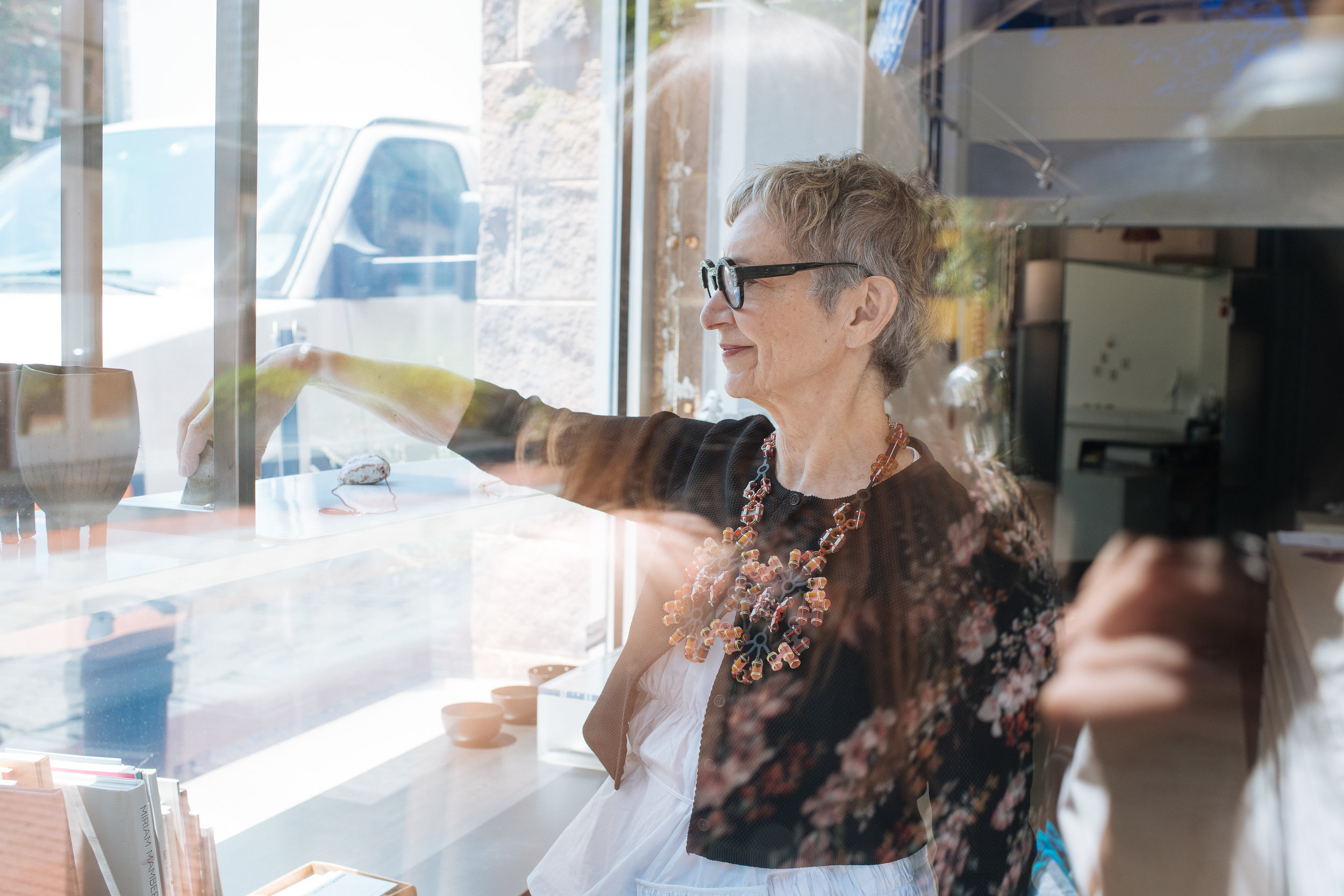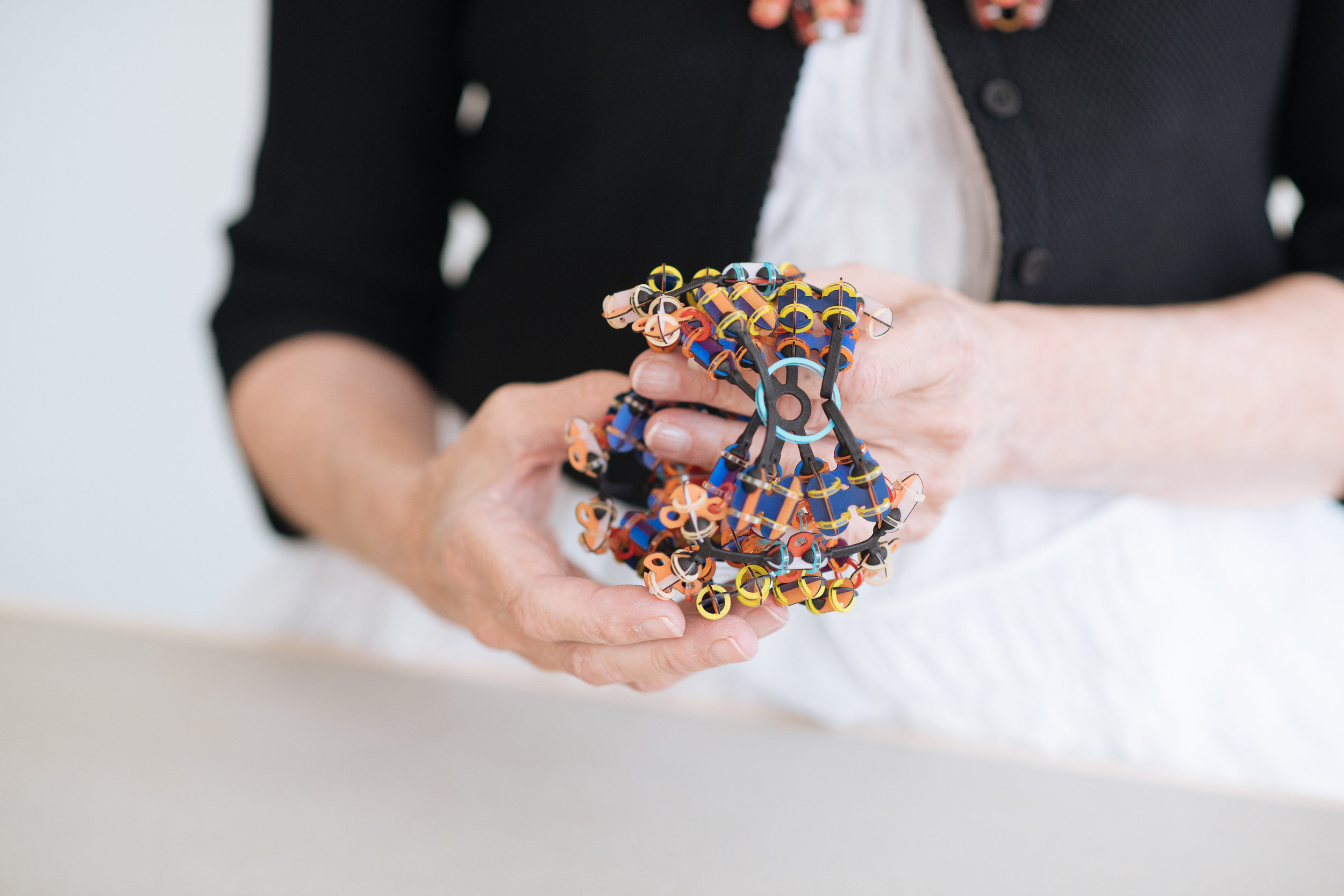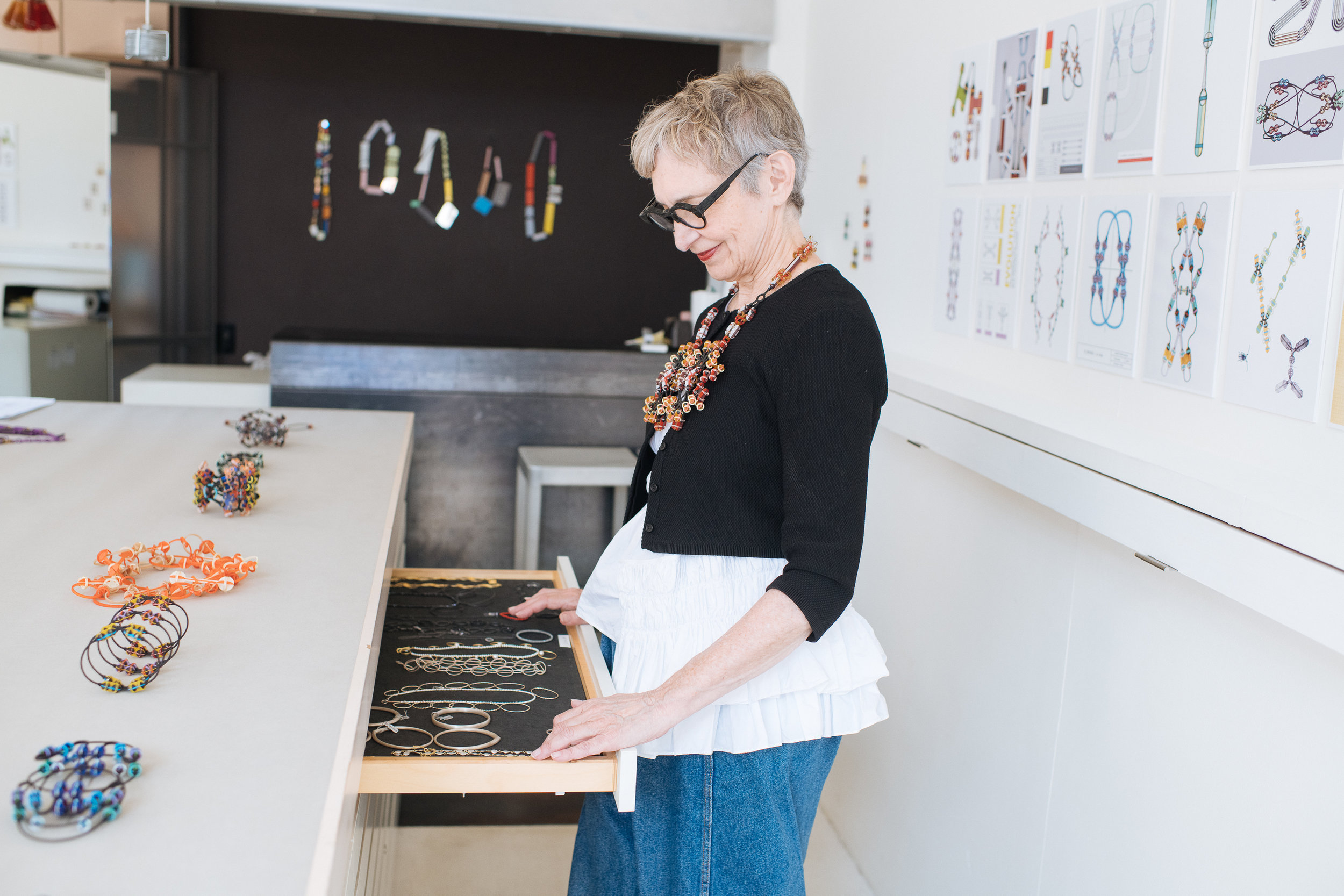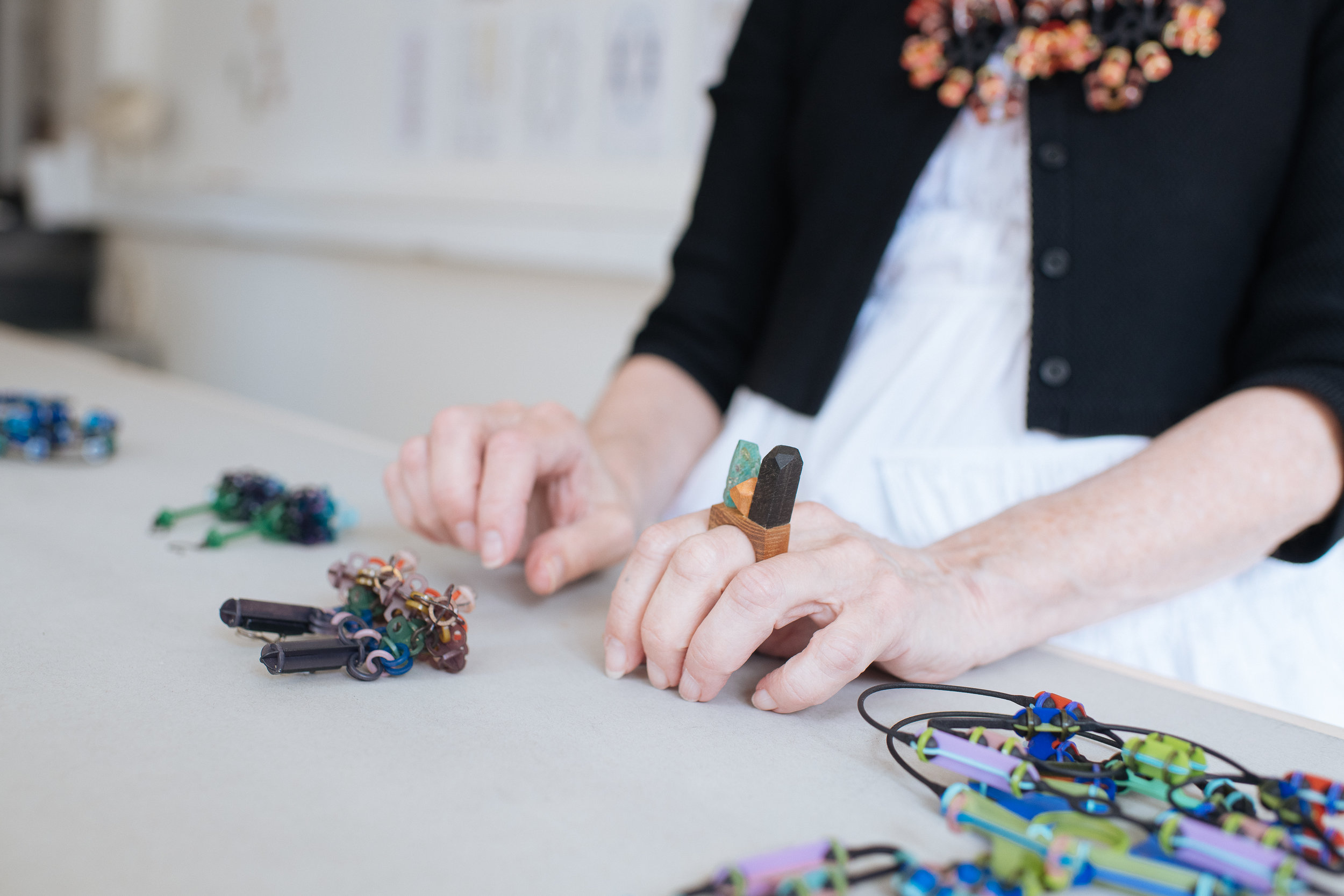‘I Was Hooked On Art Jewelry Right Away’
Ellen Reiben
Owner, Jewelers’Werk Galerie
3319 Cady’s Alley
When Ellen Reiben couldn’t get into a ceramics class her junior year at the University of Wisconsin-Madison, she opted for an intro to jewelry. One week later, she almost dropped every other class.
‘The soldering, the constructing—I didn’t even know I liked that until I did it. I loved the process, and was so hooked on it right away. That one class changed my whole life.’
Raised in Syracuse, New York, Ellen was always interested in art, but had never given jewelry prior thought. After several more classes, she moved to DC and opened a studio at the Watergate.
In 1978, Ellen returned to upstate New York and earned a Master of Fine Arts in metalsmithing and jewelry—settling back in DC after graduation and showing her experimental, avant garde work at a gallery run by Dutch artist Joke van Ommen. It was a huge opportunity for the young artist, but not enough to pay the bills.
‘I did a lot of other work. I did windows for shops, I did props for theater. I always managed to use my knowledge of materials and process to get those jobs, but freelancing was a struggle. You either have too much work or not enough.’
Five years into her partnership with the gallery, Ellen received a shocking call. Joke van Ommen had passed away unexpectedly.
‘It was October, and I was asked to run the gallery through Christmas. I said I’d be happy to, but I’d like to run it forever.’
Essentially inheriting the business, Ellen successfully ran Jewelers’Werk Galerie on 20th and Pennsylvania Avenue for two decades—becoming a single mother along the way, and slowly moving away from her own jewelry to focus on her daughter and the gallery.
When her rent suddenly doubled in 2006, a friend who is a real estate lawyer encouraged her to give Georgetown-based EastBanc CEO Anthony Lanier a call.
‘Someone from the EastBanc office came to my gallery and said, ‘Oh my god, I think I found Anthony’s jeweler. My daughter was in fourth grade and I picked her up one day after school and told her we were going on a little business venture. She came to Anthony’s office with me, and I showed him samples from the gallery. He looked me in the eye and said, ‘We’re going to make this work.’’
After searching for the perfect location, Ellen eventually moved Jewelers’Werk into a bright, tucked-away space in Cady’s Alley. Her business had been steadily rising for the past decade, and went up 40% her first year in Georgetown, surrounded by businesses attracting a similar clientele.
The next year, the Recession hit.
‘I got through that thanks to a few really good customers, but this isn’t a business for the faint-hearted. I learned you have to get used to living on a cliff. I’m a single mom, but somehow, I’m very brave. I really wanted to do this business, it’s always been my field, and I wasn’t going to give up.’
Today, business still isn’t what it used to be, but Ellen has adapted—more passionate than ever about the cutting-edge works from around the world that make JewelersWerk more art gallery than jewelry store.
‘What draws me to this field is the broad, open-mindedness of it. There’s such a broad range of materials and process, and it’s not like jewelry you see in a department store or fashion magazine. It’s really art. There’s something new all the time, and it’s mind-blowing how concepts in this field keep materializing. There are still young people coming into the field, and they’re doing pretty great things. It’s amazingly exciting; I’ve never gotten tired of it.’
The community is a small one, comprised of national and international artists who all know and trust Ellen after decades running a prestigious yet personal business—and one of the few of its kind to exclusively carry jewelry.
On the customer side, Ellen has found success with international visitors who already have an eye for the more avant garde, as well as Americans whose taste has become more daring over time.
‘Some customers start out more classical, some come in and say, ‘What is this stuff?’ They’ll start out on the safe side, and then you expose them to everything else. There’s one collector from Dallas who started with me, and now her collection will one day end up in the Dallas Museum of Art. It’s fun to watch the evolution of a collector.’
So, too, has Ellen watched the evolution of the craft. The materials haven’t necessarily changed—plastics used in jewelry as early as the 1940s—but rather their application. From plastic to rubber, concrete, silver, and gold, Ellen says Asian artists, in particular, are pushing the boundaries of design.
‘Something’s happening with their education system. Their work is incredible; so innovative, and amazingly conceived and crafted. I go to a big exhibition and conference in Munich every year, and for the last few years, more than half of the artists have been Asian.’
Ellen relishes the international crossover she’s witnessed over time in a field that was once very segregated. The jewelry world is getting smaller, she says, and American artists are finally catching up aesthetically with their counterparts.
Personally, Ellen’s aesthetic is rooted in non-precious materials—her ‘love’ since the 70s, when the Netherlands launched a wave of big, wild, colorful design. Over time, it was refined, along with Ellen’s taste.
‘When things start, they’re almost exaggerated. It’s like when a TV show starts, and you eventually go back and watch the first episode or season, and it’s all exaggerated. And then it gets polished. The same thing happened here. Today, the plastics are treated with as much dignity as gold.’
Dignity, and reverence—for the pieces, for the field, for Ellen’s lifeblood.
‘Jewelry serves a lot of purposes in our society. It can be a status symbol, it can be decoration, it can be fun. It’s definitely self-expression. You’re a pedestal of art and design with one of these pieces.’






